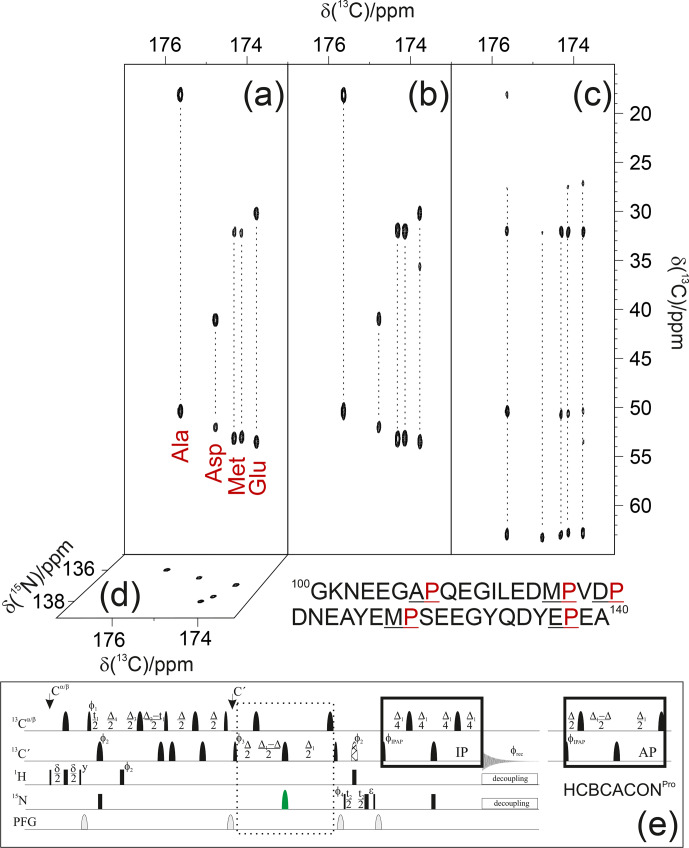Figure 3.
The implementation of the proposed strategy on -synuclein renders NMR spectra so informative that proline resonances can be assigned just by visual inspection of the figure. To this end, the first planes of the 3D (a), 3D (b), and 3D (c) are shown, and the plane of the 3D is also shown (d). The portion of the primary sequence of -synuclein hosting its five proline residues is also reported (below the spectra). The pulse sequence for acquiring the 3D experiment (e) is reported as an example of the implementation of the proposed approach (dotted box). The delays are , ms, ms, ms, ms, – ms, and ms. The phase cycle is as follows: x, -x; 8(x), 8(-x); 4(x), 4(-x); 2(x), 2(-x); x; and -y; x, -x, -x, x, -x, x, x, -x. Quadrature detection was obtained by incrementing phase and in a States–TPPI (time-proportional phase incrementation) manner. The IPAP (in-phase/antiphase) approach was implemented for homonuclear decoupling in the direct acquisition dimension to suppress the large one bond scalar coupling constants ( ; Felli and Pierattelli, 2015); alternative approaches can be implemented that exploit band-selective homonuclear decoupling (Alik et al., 2020; Ying et al., 2014) or processing algorithms that, thus, only require the in-phase spectra (Karunanithy and Hansen, 2021; Shimba et al., 2003).

